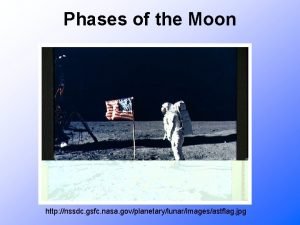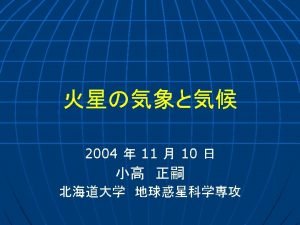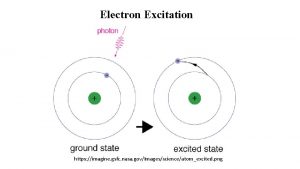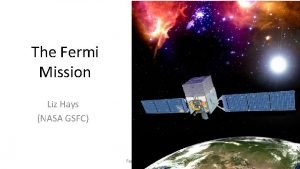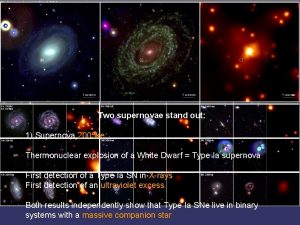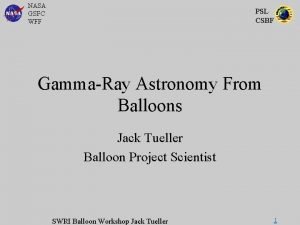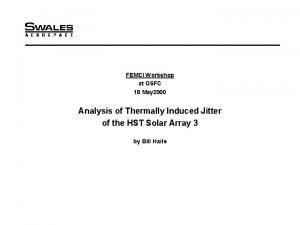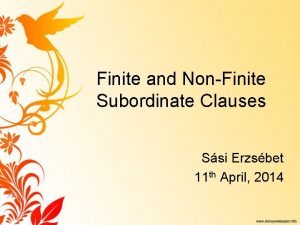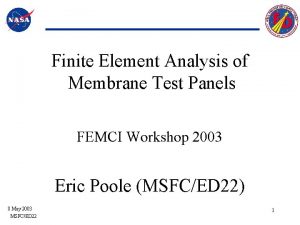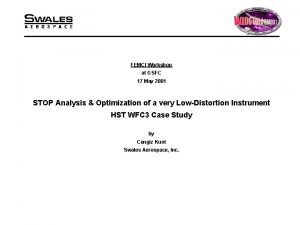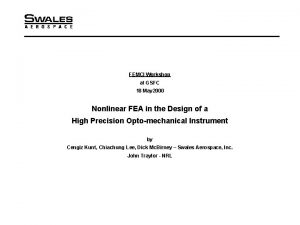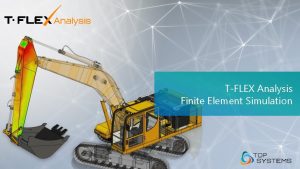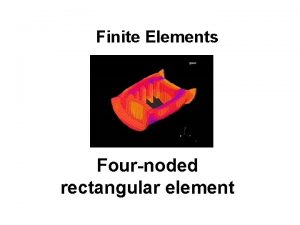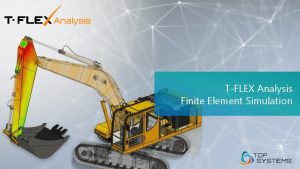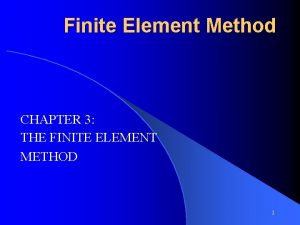FINITE ELEMENT MODELING CONTINUOUS IMPROVEMENT FEMCI GSFC NASA










- Slides: 10

FINITE ELEMENT MODELING CONTINUOUS IMPROVEMENT FEMCI. GSFC. NASA. GOV NASA Goddard Space Flight Center Greenbelt, Maryland, USA Mechanical Systems Analysis and Simulation Branch, Code 542 JWST Multi-Mega FE Model Studies Terry Fan/Swales Aerospace Mark Mc. Ginnis/Swales Aerospace Glenn Grassi/MSC. Software Johnston, PH. D. /GSFC May 4 & May 5, 2005

Objective & Summary l The objective of this study is to find an optimized computing solution n Enable Multi-mega model runs and, n Shorten the iteration times to a reasonable time frame l Summary n Benchmarking runs performed on several computer systems indicates that daily iteration is feasible n Super-element can be used to alleviate the hardware demanding, however it might prolong the iteration time. n Post processing of Mega-models may pose challenges. Well equipped computer will dramatically improve speed • RAM • CPU Speeds 2

Introduction l The James Webb Space Telescope (JWST) structure system is operated at 30 Kelvin with nanometer-level performance requirements. l The main structure of the JWST is made of composite tubular components with a near-zero axial CTE and significant transverse CTE. l The traditional so-called stick model composed of beam elements cannot capture the transverse CTE, adhesive, clips, gussets, and other effects, which preliminary analyses indicate will have an firstorder impact on the prediction distortions. l 8 -noded brick elements were chosen to model the composite structures of JWST n n To capture, transverse, through-the-thickness, and adhesive CTE effects 30 millions degrees of freedom FEM is expected 3

Challenges & Issues l These are the largest structural models run at GSFC to date and are pushing/exceeding the limits of our computational resources l Pre/post-processing cumbersome n e. g. 30 min. to load model & generate pictures (2) of 4 MDOF model in FEMAP w/ a 1. 6 GHz, 1 G RAM, Dell M 60 precision workstation n Model loading time was reduced to 2 min. from 6 min. when RAM was increased to 2 GB compared l Integrations of Subsystem FEMs n n I/F definitions among subsystems • Element types • Coordinates Subsystems are modeled using MSC. Nastran and IDEAS • Incompatibility issues caused by IDEAS converted Nastran model 4

Challenges & Issues l MSC/Nastran and Pre- & Post-processors n How to run the Multi-mega model efficiently in MSC/Nastran n Super-element Analysis n Modeling guidelines n How to improve the pre- & post-processing time n What pre- & post-processors to use (FEMAP & Patran) n FEM mesh quality l Hardwires Specifications n CPU architecture, i. e. parallel processing n CPU speed n RAM n Disk Space & I/O configuration 5

JWST Observatory Architecture Primary Mirror (PM) • 18 (1. 315 m) hex segments Optical Telescope Element (OTE) ISIM • NIRCam, NIRSpec, MIRI & FGS Secondary Mirror (SM) Sunshield • Passive cooling of ISIM/OTE to <40 K Tower 6

JWST Telescope Architecture Secondary Mirror Support Structure (SMSS) Aft Optics Subsystem (A 0 S) • Fixed tertiary mirror • Fine steering mirror • PM baffle/radiator ISIM Enclosure (IEA) Secondary Mirror Assembly (SMA) Primary Mirror Segment Assemblies (PMSA) • Light-weighted, semi-rigid segments • 18 modular units make up PM • Hexapod rigid body actuation, one Ro. C actuator PM Back. Plane Assy (PMBA) • Supports 18 PMSAs, ISIM, IEC, Radiators, IOS, SMSS • Torque Box BSF Deployment Tower Subsystem (DTS) 7

A PRELIMINARY 4 MDOF JWST FEM PMBA ISIM JWST system model Brick elements are used to model the tubular structure. Example shown is 4+ M DOFs model. 8

MSC. Software Mega Models Benchmarking (1/2) l Performed by MSC. Software l Three computing systems n Machine: Vesuvius • speed: 900 MHz op sys: HP-UX B. 11. 22 ram: 8 Gb cpus: 4 Mckinley cpus n Machine: Sumatra - 4 CPU - RAM=8 Ggb • Hewlett Packard 9000 MODEL 9000/800/N 4000 -55 HP-UX (64 -bit) B. 11. 00 n Machine: IA 647 • Intel Itanium 2 /149 Linux 2. 4. 18 -e. 31 smp n Nastran Version 2005. 0. 3 BETA • • • Residual Only - No Superelements TEMPD CPU=1 SCR=YES Buffsize=65537 9

MSC. Software Mega Models Benchmarking (2/2) 10
